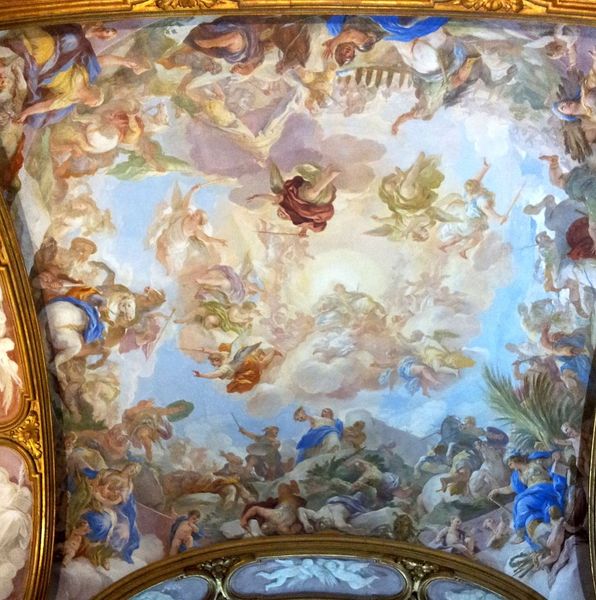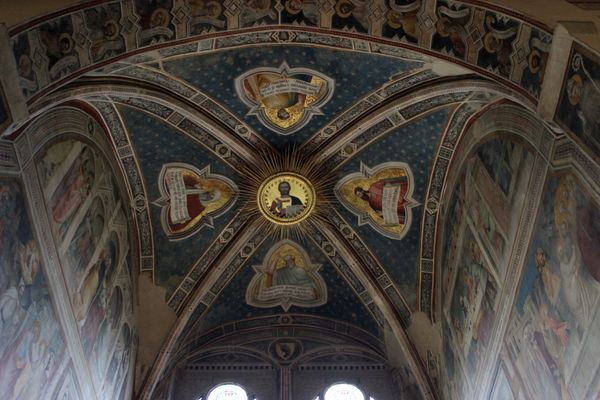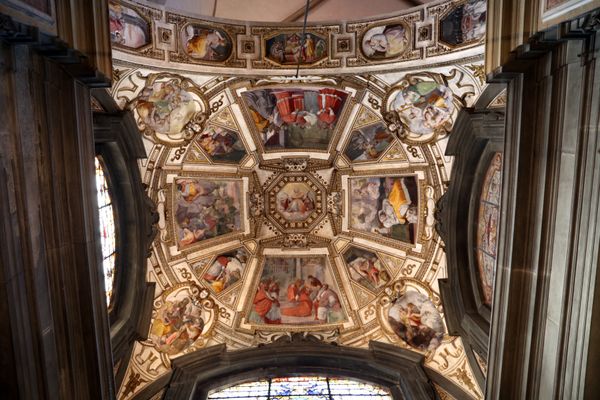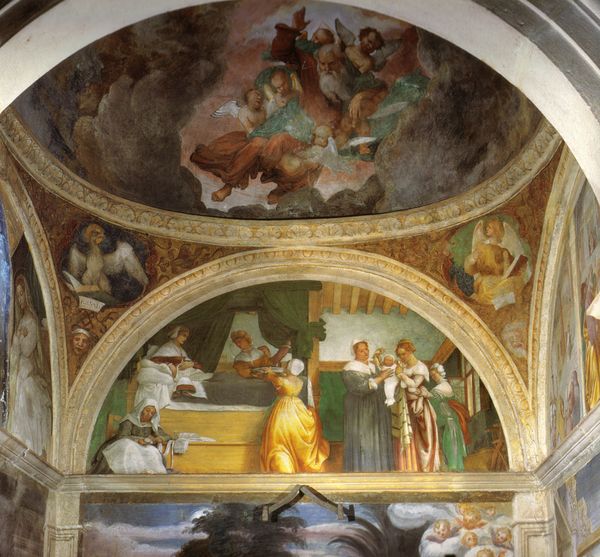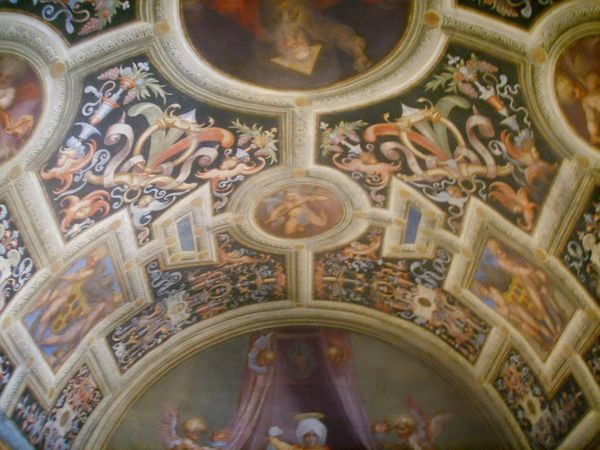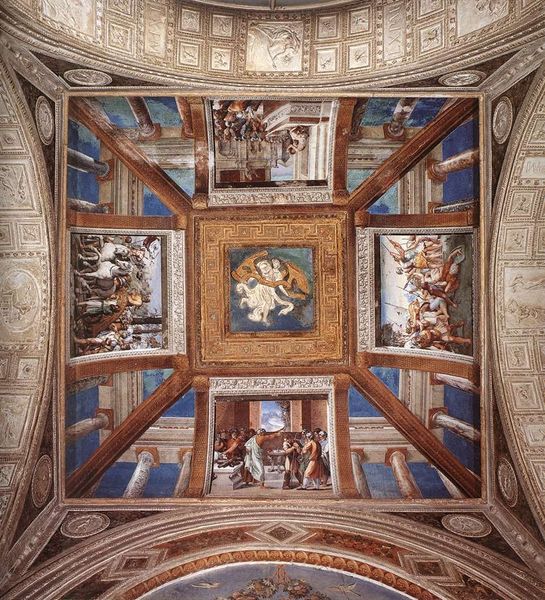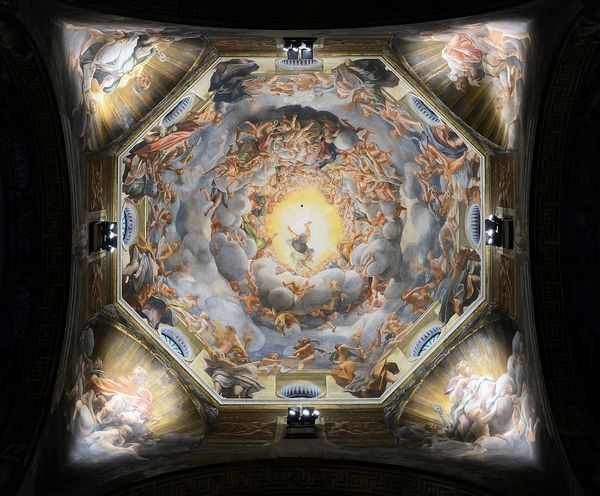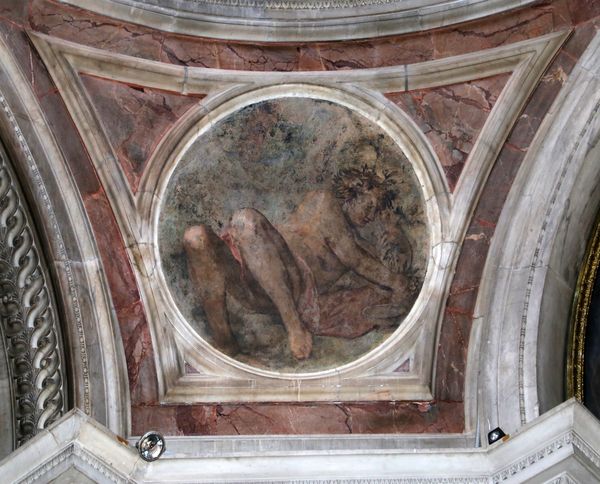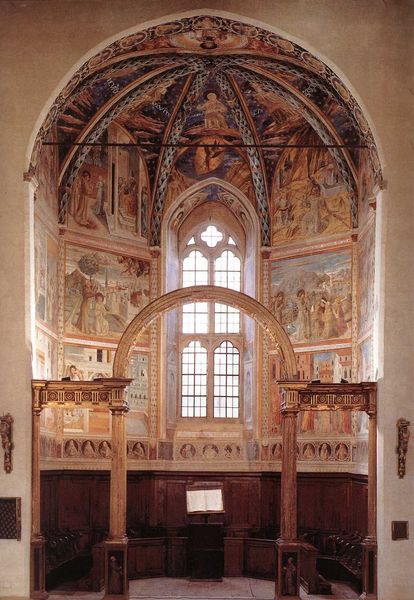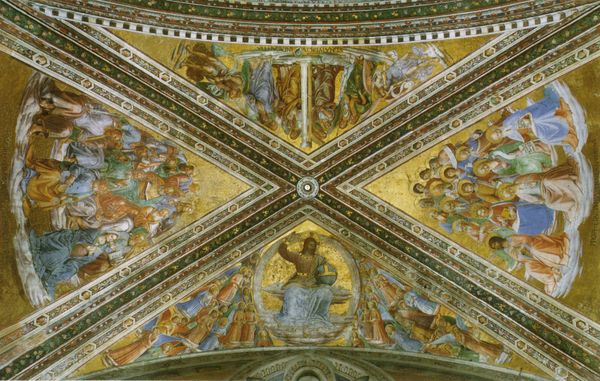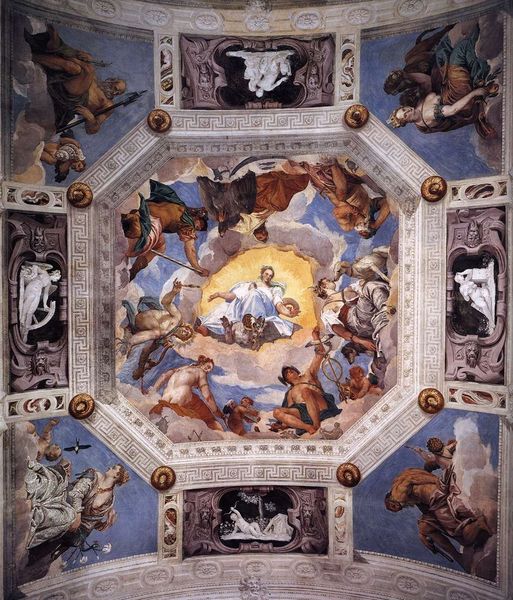
fresco
#
allegory
#
baroque
#
fresco
#
roman-mythology
#
underpainting
#
history-painting
Copyright: Public domain
Editor: So, this is "Fall of the Giants," a fresco from 1734 by Pietro Longhi. It's quite the immersive experience, gazing upwards at the figures tumbling from the sky! The composition, with all the swirling bodies and the illusion of depth, makes the space feel almost…unstable. What strikes you most about the structure of this piece? Curator: Indeed, its dynamism is remarkable. Notice how Longhi employs *quadratura*, blurring the lines between architecture and illusion. The fresco extends the physical space, incorporating the actual architectural framework. The figures aren't merely *in* the space, they *become* part of it. Observe the artist's use of light. Where is the light source? And how does the *chiaroscuro* – the contrast between light and dark – affect the spatial relationships? Editor: It seems like the light source is from below, or within the clouds, creating a heavenly glow. The strong contrast definitely emphasizes the three-dimensionality of the figures. The underpainting gives the bodies such solidity. But does the fresco being above, on the ceiling, affect the narrative itself? Does our viewpoint change our relationship to the myth? Curator: Precisely. Placement is essential here. The fresco on the ceiling actively positions the viewer *below* the Olympian fray, forcing us to look upwards into the dramatic swirl. It suggests both the power of the gods and the vulnerability of mortals in their presence. Do you discern any symbolic order in what appears at first glance as chaotic disorder? Editor: I see now. It’s designed to overwhelm! Thinking about the dynamism you pointed out, maybe the circular composition adds to a feeling of endless falling. It seems so obvious now! Thanks for helping me look past just the literal story. Curator: My pleasure. By focusing on the visual syntax, on Longhi's calculated application of compositional principles, light, color, and line, one unlocks the deeper, more universal meaning within. We are reminded that form always serves the idea.
Comments
No comments
Be the first to comment and join the conversation on the ultimate creative platform.
